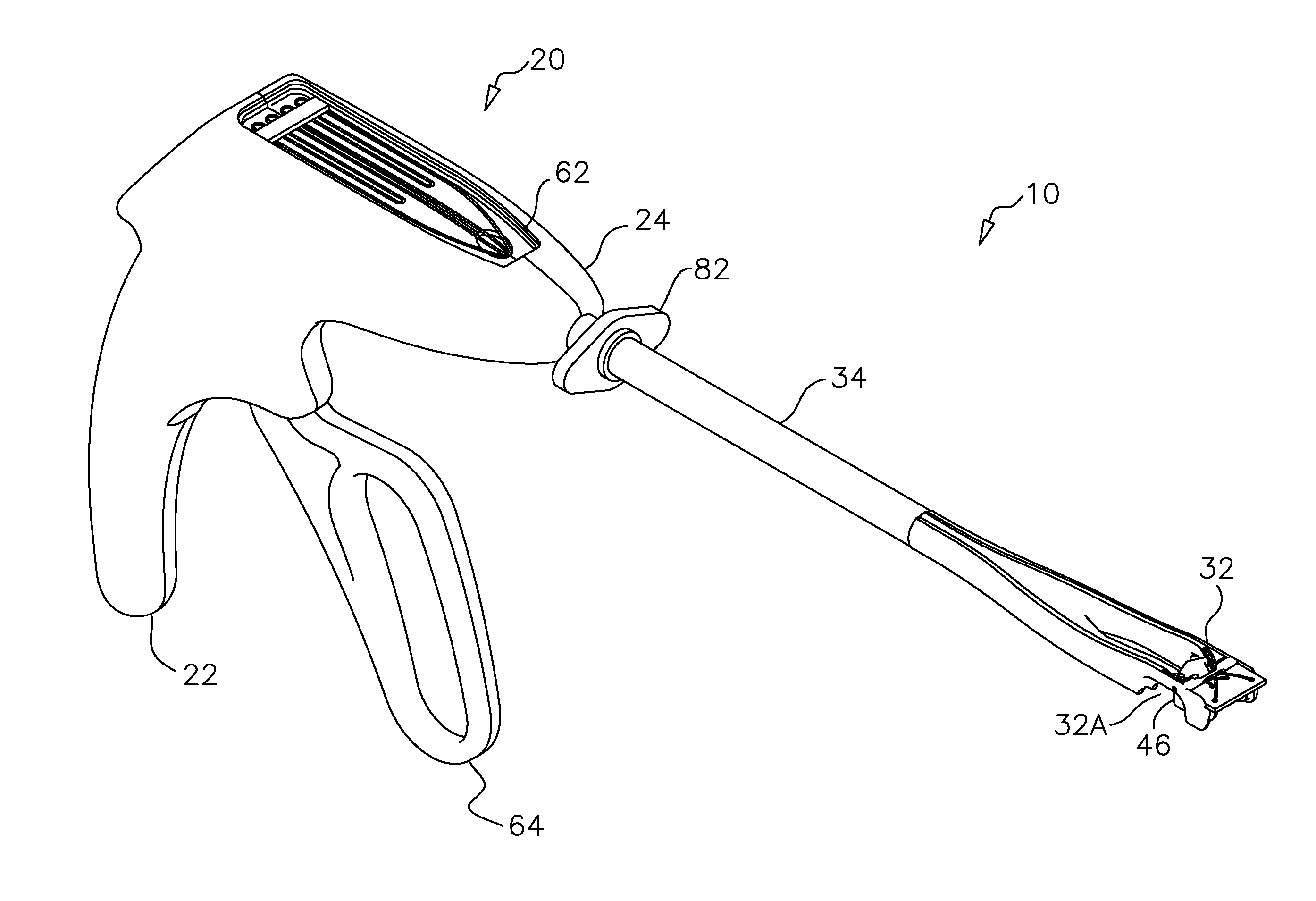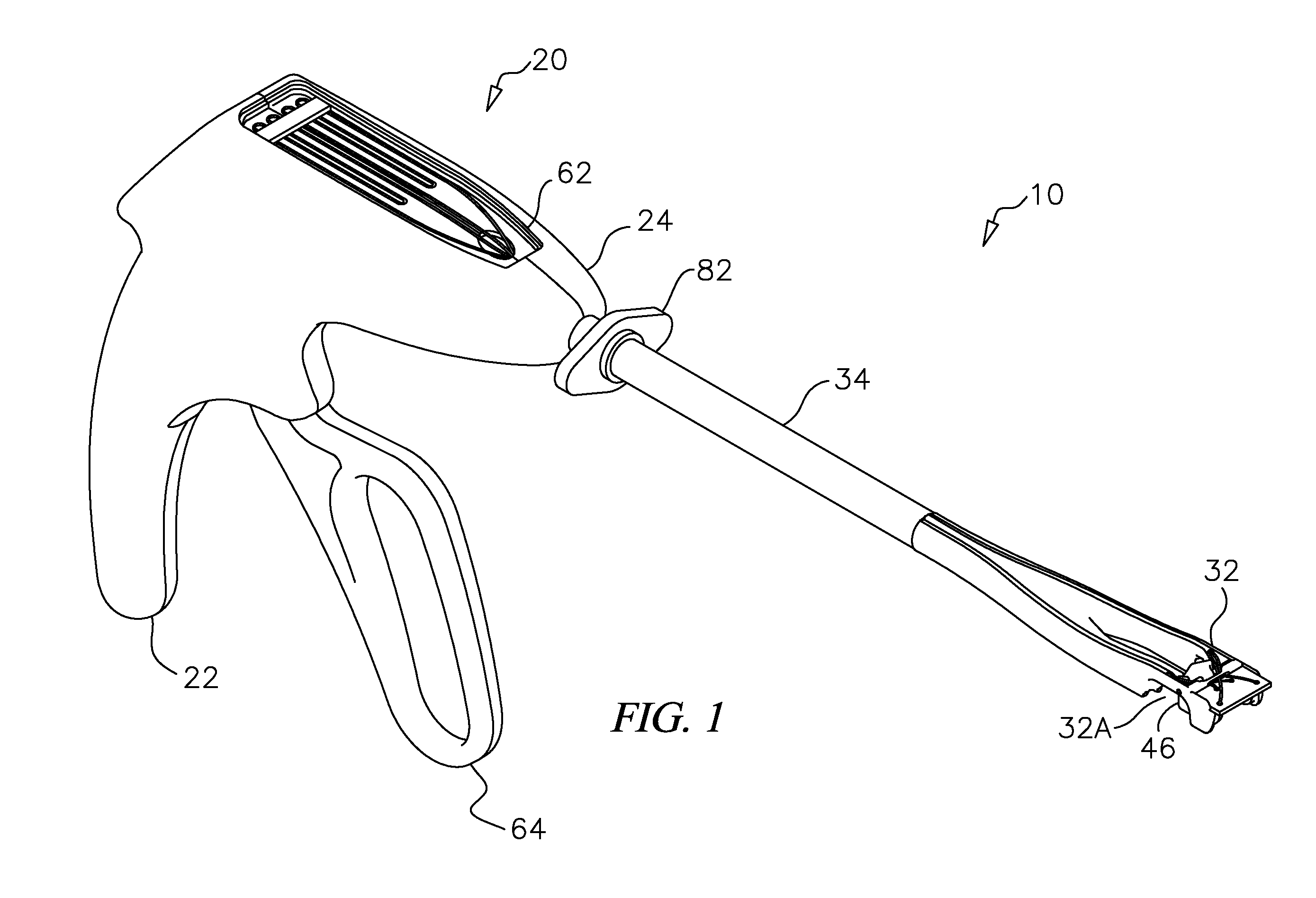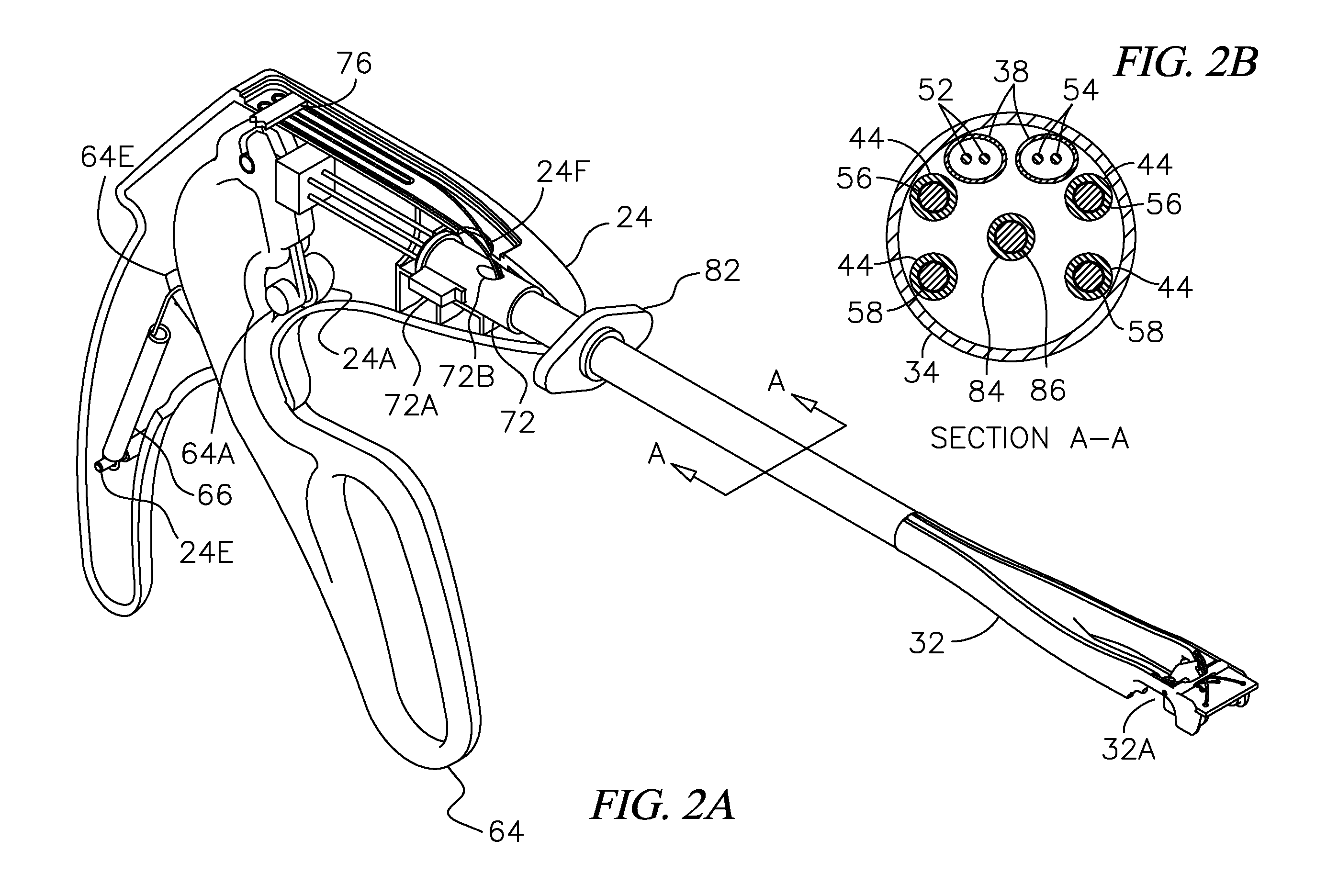[0020]The present invention reliably places two concentric horizontal mattress sutures around a targeted tissue site, which can be thicker walled and potentially moving. To protect a suture closure site, an additional element called a pledget is sometimes used. The pledget, also called a
bolster, can be made from sturdy but soft and compliant pad-like material, such as Teflon cloth or rolled cotton linen. The pledget is placed between the narrow suture and the delicate tissue to avoid overly compressing the tissue with the suture during tightening and healing. The outside segment of both sutures at the flat bottom of the box passes over a central portion of a single four holed pledget held in the distal end of the device. The two ends of each suture pass through four corresponding holes in the pledget so that after taking the four tissue bites, the pledget is pulled down onto the tissue. To close the top of the box, a second single four holed pledget or alternatively two, two holed pledgets can be used to secure the free ends of the suture that have exited the proximal side of the tissue suturing site. The free ends of the suture pass through holes in the pledgets and provide a
cushion buffer between the knotted suture connection and the underlying tissue. Knotting or otherwise securing the suture together essentially permanently closes the top of box and compresses together the tissue between the sutures and pledgets.
[0021]This is a novel
suturing instrument for the remote placement of multiple pledgeted sutures centered circumferentially surrounding a targeted tissue
wound site in relatively thick and less compliant tissue, such as the
beating heart and
aortic wall structures. Its sutures are precisely delivered to predetermined tissue depths and for pre-set distances. It does not require the distal end of the device to enter the
wound site and can place the secure sutures around an existing guide wire before the access wound is fully opened. The
suturing instrument includes a pistol grip style
handle and a hand actuated lever for the precise placement of multiple pledgeted horizontal mattress sutures at the targeted
access site, such as the
anterior surface of the heart near its apex or the
ascending aorta. The shaft of the instrument connects at its proximal end to the
handle, which remains outside of the patient and in
direct control of the surgeon. For example, in creating and closing a transapical
access site, the shaft enters and traverses the patient's body at the left chest wall to deliver the device distal end where suture placement occurs to the targeted
anatomic location (e.g., the apex of the beating heart).
[0022]This suturing instrument incorporates a low profile rotating, lockable, mechanical tissue alignment guide to enable more automatic controlled positioning of its distal end at its desired tissue location. The unlocked alignment mechanism rotates to allow the device end and its indwelling guide wire to pass more freely through narrow openings. When locked, the alignment guide provides a stable guide mechanism orienting the indwelling guide wire in a favorable position perpendicular to the tissue receiving jaw or welting trough of the suturing instrument for placing the sutures.
[0023]Further, this instrument provides a mechanical
assembly to accurately and securely engage the distal end of this suture delivery instrument with the targeted tissue site. One tissue engagement
assembly provides two linked balloons. When both balloons are filled and expanded, a tissue
ridge or welt is compressed and sandwiched in the space between the balloons and the receiving gap or welting trough in the distal end of the instrument, thereby moving and re-conforming the targeted tissue into the most appropriate suturing position. An alternative tissue engagement
assembly provides an expandable, mechanical assembly such as an internal hinged mechanical anchor that pulls tissue up into the suturing position against the welting trough in the undersurface of the suturing jaw, while an external compression spring exerts force on the top of the rotating alignment guide mechanism to further press the welting trough onto the tissue suturing site.
[0025]Transcatheter therapies are rapidly becoming mainstream for the treatment of structural
heart disease. A transthoracic non-rib spreading single port option providing
short distance, non-torturous direct access and including a secure transapical
wound closure could further advance the benefits of this antegrade procedure.
[0028]Advanced customized tools are needed to assure cardiothoracic surgeons continue to lead in the critically important arena of minimally invasive therapeutic
heart procedures. This automated transapical access
wound closure technology and technique developed for endoscopic use was demonstrated to be ergonomic, fast, effective and highly reliable. The fresh porcine heart
bursting pressure study showed these remote suture mediated wound closures remained hermetic beyond the supra physiologic infusion pressures intolerable to other structural elements of the hearts tested in this model. The early successful results illustrating hemostatic closures in porcine
in vivo beating hearts and transthoracic totally endoscopic apical closures through a single port in the human
cadaver model encourage further evaluation.
 Login to View More
Login to View More  Login to View More
Login to View More 


